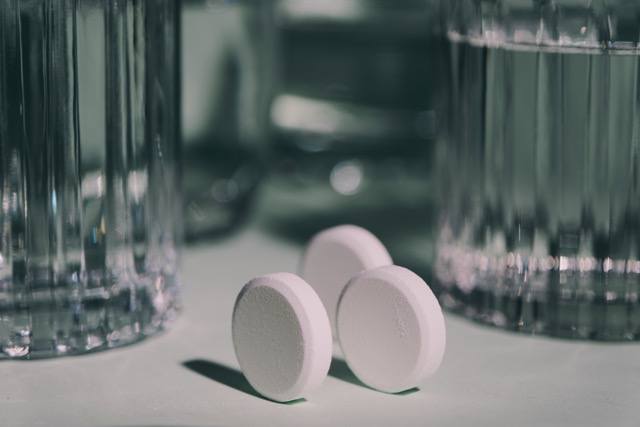What is biological age and why is it important?
Lifestyle factors may be the most important determinant of how fast your biological clock is ticking.
.jpg)
Aron Visuals
The clock is ticking in each of our eight trillion body cells. From the moment of birth, each of us begins a linear process of growth and maturation, ages a little more each day and experiences, as Alex Comfort from Joy of Sex Fame wrote in 1972, a “decline in viability and an increase in vulnerability.” We don't yet have the technology to turn back time, which means that our traditional concepts of aging will remain the way they are for now.
But viewing aging as a passive process beyond our control is part of an outdated concept, particularly in the eyes of scientists working on the biology of aging. While we cannot slow down time ourselves, research shows that it is possible to change the process of aging and perhaps slow down the rate at which we age physically and mentally. New findings in science show that how old we are in years may not reflect how old we are on the inside.
What is aging?
When we talk about aging in the traditional sense, we mean chronological aging, which is more likely to be responsible for several serious illnesses — including cardiovascular disease, cancer, chronic lower respiratory diseases, diabetes and Alzheimer's, and dementia.
Why we age is complex and involves many cellular and molecular processes. But in general, advancing age entails an increase in cell damage and a “loss of molecular reliability.” A cornerstone of modern biology and aging theory is that aging is driven by a “targeted genetic program” — meaning we may have very little control over the process. However, this “traditional” theory of chronological aging is slowly being replaced by more modern views on the biology of aging — views that are more likely to accept the malleability of the aging process.
What is biological aging?
In contrast to chronological aging, biological aging, also known as metabolic aging, actually reflects the aging process that takes place in our cells and tissues. In other words, biological age is the relative age of cells and tissues and the damage they have accumulated.
With every day and year, our bodies are exposed to the effects of chronic inflammation, cell breakdown, mitochondrial DNA damage, stem cell exhaustion, and cellular senescence. Metabolic or biological aging is not the result of a single genetic program, but the random accumulation of many “stochastic” events described above. According to pioneering aging scientist Leonard Hayflick, aging is “an increase in molecular disorder.” This disorder occurs because our bodies become less efficient at repairing and replacing worn or senescent cells. DNA, proteins, mitochondria, and other cellular structures are damaged, and when molecular disorders in cells exceed our ability to repair that damage, a change occurs that we call aging.
How does biological age differ from chronic age?
Just like humans, cells age at different rates. This means that biological age can vary significantly between individuals, as opposed to chronological age. Illness, frailty, and cognitive decline can be experienced differently by two people of the same age. Because metabolic age takes into account factors such as lifestyle, diet, genetic history, and disease conditions, and how these factors influence aging and overall vitality, it is the more superior measure of true age.
How is biological age measured?
The individual numeric name, which indicates a chronological or “actual” age, is probably not an ideal way of quantifying the quality of aging. Fortunately, developments in modern aging science are showing us new ways to measure molecular and cellular processes that can provide insight into our “true” metabolic or biological age.
One of the traditional theories of aging is the measurement of our basal metabolic rate, also known as BMR (basal metabolic rate, or basal metabolic rate). BMR is the amount of calories or energy needed to maintain basic physical functions (such as breathing, digestion, blood circulation, and thermoregulation). Some studies have found that a higher BMR may not be the best indicator of your true metabolic or biological age.
For this reason, scientists are looking for biomarkers that could better predict the actual metabolic age. “Biomarkers” are measurable parameters which have prognostic or diagnostic significance in a biological system (typically in a blood or tissue sample) and are therefore used as indicators of pathological changes but also biologically normal processes in the body.
Several laboratory biomarkers have been developed and tested as biomarkers of aging. For example, simple clinical biomarkers such as those for inflammation, glucose metabolism, and thyroid hormone levels have shown that they predict disease outcomes and mortality and could be a way to obtain a snapshot of biological age. However, more advanced genetic methods for measuring biological age have come into the spotlight and piqued the interest of biologists — telomere length and the “epigenetic clock.”

Telomeres are caps at the ends of our chromosomes that protect them from DNA damage, compared to the plastic ends on shoelaces. Each time a cell divides, the telomeres shorten (the shoelace frays). The shortening of telomeres causes cells to grow closer to their replicative capacity — also known as the “Hayflick Limit.”
An enzyme called telomerase can help replenish lost telomere DNA and “regrow” telomeres. However, this enzyme decreases with increasing age. For this reason, both telomere length and telomerase enzyme quantity have been proposed as biomarkers for aging. And while many have suggested that telomeres may play a critical role in the aging process, there is currently not enough evidence that telomere shortening is a valid measure of biological aging.
Another promising biomarker for metabolic age is known as the “Horvath clock.” This “watch” was developed by Steven Horvath and his team at UCLA in 2013. Also known as the “epigenetic clock,” Horvath's clock measures epigenetic markers of DNA — known as methylation — to estimate the rate of aging. DNA methylation is the process of substituting a hydrogen molecule in organic compounds with a methyl group. This change in methylation is directly proportional to age, so the greater the “methylation”, the higher the metabolic or biological age. Measuring DNA methylation using epigenetic clocks could be one of the most informative age biomarkers available to date, with an error range of +/- 2.7 years. The fascinating thing about the epigenetic clock is that it allows metabolic or biological age to be measured in many different tissues and provides a more accurate and complex view of the aging process and an insight into how various lifestyle factors and interventions can influence aging within individuals.
Which risk factors increase biological age?
A high life expectancy could be explained or hoped for in some families with “good genes.” However, when it comes to biological age, lifestyle factors may be the most important determinant of how fast your biological clock is ticking.
Traditional risk factors such as high blood pressure, cholesterol, and blood sugar are excellent for assessing the risk of cardiovascular and metabolic diseases and are likely related to biological aging.
Cigarette smoke and alcohol are also linked to epigenetic changes, as they contain toxic, pro-inflammatory and some carcinogenic compounds that can accelerate aging processes. Environmental pollutants (air pollution) and high levels of emotional, physical, and psychological stress can also help the genetic clock tick faster. Diets high in sugar are one of the most harmful influences on health and aging, as shown by the association of sugar consumption with diabetes, dementia and cardiovascular diseases. Being overweight or obese is a significant risk factor for diseases and is likely to contribute to increasing biological age. This may be largely due to the negative effects of a large amount of visceral fat (fat stored around the abdomen), which has been shown to be pro-inflammatory and may interfere with the action of insulin and promote metabolic disorders.

How we can improve our biological age
Preventing unwanted or “accelerated” aging can be done by avoiding negative lifestyle factors. But what, if anything, can we do to actually improve or reduce biological age?
Body weight, blood pressure, cholesterol, and insulin and glucose levels are risk factors that are involved in metabolic and cardiovascular regulation. Studies have shown that epigenetic aging progresses more slowly at levels that are within a normal range.
A diet rich in polyphenols can also help reduce biological age. Polyphenols are natural compounds, so-called secondary plant substances, which have been shown to modify epigenetic markers that are involved in biological aging. A recent study found that diets high in fruits and vegetables (which contain high amounts of polyphenols) were linked to anti-aging effects. Anti-aging protective substances include resveratrol in red wine, sulforaphane in broccoli, quercetin in apples and onions, and curcumin from turmeric.
Another extremely effective measure to extend life, which has been the best studied for many years, is fasting. Hunger is primarily a natural stress for the body and causes “repair enzymes” to repair damage in the cell and DNA.
Higher physical activity is associated with slower epigenetic aging, and exercise training has been shown to have effects on DNA methylation and other epigenetic processes. Regular sweating improves metabolic function, builds muscle mass to protect against frailty and sarcopenia, and increases aerobic and cardiorespiratory fitness — exercise is anti-aging in the perfect sense and one of the best ways to maintain youthful metabolic age.
It is known that continuous stress and excessive stress can cause and accelerate biological aging. Good stress management is therefore another way to positively influence biological aging.
Research has shown that chronic stress increases the risk of cardiovascular disease by up to 75% increases and could even be decisive in the development of cancer.
Age is just a number
The number of candles on the birthday cake may not say as much about the actual age as we once thought. As the science of aging uncovers more about how and why we age, it's becoming clear that age is really “just a number.” How old we really are, i.e. our biological age, can be influenced by what we eat, how we move and our daily exposures. The good news is that it seems possible to slow down the rate at which we age and perhaps even reverse our biological age.
References
Publiziert
22.7.2024
Kategorie
Longevity

Experte
The clock is ticking in each of our eight trillion body cells. From the moment of birth, each of us begins a linear process of growth and maturation, ages a little more each day and experiences, as Alex Comfort from Joy of Sex Fame wrote in 1972, a “decline in viability and an increase in vulnerability.” We don't yet have the technology to turn back time, which means that our traditional concepts of aging will remain the way they are for now.
But viewing aging as a passive process beyond our control is part of an outdated concept, particularly in the eyes of scientists working on the biology of aging. While we cannot slow down time ourselves, research shows that it is possible to change the process of aging and perhaps slow down the rate at which we age physically and mentally. New findings in science show that how old we are in years may not reflect how old we are on the inside.
What is aging?
When we talk about aging in the traditional sense, we mean chronological aging, which is more likely to be responsible for several serious illnesses — including cardiovascular disease, cancer, chronic lower respiratory diseases, diabetes and Alzheimer's, and dementia.
Why we age is complex and involves many cellular and molecular processes. But in general, advancing age entails an increase in cell damage and a “loss of molecular reliability.” A cornerstone of modern biology and aging theory is that aging is driven by a “targeted genetic program” — meaning we may have very little control over the process. However, this “traditional” theory of chronological aging is slowly being replaced by more modern views on the biology of aging — views that are more likely to accept the malleability of the aging process.
What is biological aging?
In contrast to chronological aging, biological aging, also known as metabolic aging, actually reflects the aging process that takes place in our cells and tissues. In other words, biological age is the relative age of cells and tissues and the damage they have accumulated.
With every day and year, our bodies are exposed to the effects of chronic inflammation, cell breakdown, mitochondrial DNA damage, stem cell exhaustion, and cellular senescence. Metabolic or biological aging is not the result of a single genetic program, but the random accumulation of many “stochastic” events described above. According to pioneering aging scientist Leonard Hayflick, aging is “an increase in molecular disorder.” This disorder occurs because our bodies become less efficient at repairing and replacing worn or senescent cells. DNA, proteins, mitochondria, and other cellular structures are damaged, and when molecular disorders in cells exceed our ability to repair that damage, a change occurs that we call aging.
How does biological age differ from chronic age?
Just like humans, cells age at different rates. This means that biological age can vary significantly between individuals, as opposed to chronological age. Illness, frailty, and cognitive decline can be experienced differently by two people of the same age. Because metabolic age takes into account factors such as lifestyle, diet, genetic history, and disease conditions, and how these factors influence aging and overall vitality, it is the more superior measure of true age.
How is biological age measured?
The individual numeric name, which indicates a chronological or “actual” age, is probably not an ideal way of quantifying the quality of aging. Fortunately, developments in modern aging science are showing us new ways to measure molecular and cellular processes that can provide insight into our “true” metabolic or biological age.
One of the traditional theories of aging is the measurement of our basal metabolic rate, also known as BMR (basal metabolic rate, or basal metabolic rate). BMR is the amount of calories or energy needed to maintain basic physical functions (such as breathing, digestion, blood circulation, and thermoregulation). Some studies have found that a higher BMR may not be the best indicator of your true metabolic or biological age.
For this reason, scientists are looking for biomarkers that could better predict the actual metabolic age. “Biomarkers” are measurable parameters which have prognostic or diagnostic significance in a biological system (typically in a blood or tissue sample) and are therefore used as indicators of pathological changes but also biologically normal processes in the body.
Several laboratory biomarkers have been developed and tested as biomarkers of aging. For example, simple clinical biomarkers such as those for inflammation, glucose metabolism, and thyroid hormone levels have shown that they predict disease outcomes and mortality and could be a way to obtain a snapshot of biological age. However, more advanced genetic methods for measuring biological age have come into the spotlight and piqued the interest of biologists — telomere length and the “epigenetic clock.”

Telomeres are caps at the ends of our chromosomes that protect them from DNA damage, compared to the plastic ends on shoelaces. Each time a cell divides, the telomeres shorten (the shoelace frays). The shortening of telomeres causes cells to grow closer to their replicative capacity — also known as the “Hayflick Limit.”
An enzyme called telomerase can help replenish lost telomere DNA and “regrow” telomeres. However, this enzyme decreases with increasing age. For this reason, both telomere length and telomerase enzyme quantity have been proposed as biomarkers for aging. And while many have suggested that telomeres may play a critical role in the aging process, there is currently not enough evidence that telomere shortening is a valid measure of biological aging.
Another promising biomarker for metabolic age is known as the “Horvath clock.” This “watch” was developed by Steven Horvath and his team at UCLA in 2013. Also known as the “epigenetic clock,” Horvath's clock measures epigenetic markers of DNA — known as methylation — to estimate the rate of aging. DNA methylation is the process of substituting a hydrogen molecule in organic compounds with a methyl group. This change in methylation is directly proportional to age, so the greater the “methylation”, the higher the metabolic or biological age. Measuring DNA methylation using epigenetic clocks could be one of the most informative age biomarkers available to date, with an error range of +/- 2.7 years. The fascinating thing about the epigenetic clock is that it allows metabolic or biological age to be measured in many different tissues and provides a more accurate and complex view of the aging process and an insight into how various lifestyle factors and interventions can influence aging within individuals.
Which risk factors increase biological age?
A high life expectancy could be explained or hoped for in some families with “good genes.” However, when it comes to biological age, lifestyle factors may be the most important determinant of how fast your biological clock is ticking.
Traditional risk factors such as high blood pressure, cholesterol, and blood sugar are excellent for assessing the risk of cardiovascular and metabolic diseases and are likely related to biological aging.
Cigarette smoke and alcohol are also linked to epigenetic changes, as they contain toxic, pro-inflammatory and some carcinogenic compounds that can accelerate aging processes. Environmental pollutants (air pollution) and high levels of emotional, physical, and psychological stress can also help the genetic clock tick faster. Diets high in sugar are one of the most harmful influences on health and aging, as shown by the association of sugar consumption with diabetes, dementia and cardiovascular diseases. Being overweight or obese is a significant risk factor for diseases and is likely to contribute to increasing biological age. This may be largely due to the negative effects of a large amount of visceral fat (fat stored around the abdomen), which has been shown to be pro-inflammatory and may interfere with the action of insulin and promote metabolic disorders.

How we can improve our biological age
Preventing unwanted or “accelerated” aging can be done by avoiding negative lifestyle factors. But what, if anything, can we do to actually improve or reduce biological age?
Body weight, blood pressure, cholesterol, and insulin and glucose levels are risk factors that are involved in metabolic and cardiovascular regulation. Studies have shown that epigenetic aging progresses more slowly at levels that are within a normal range.
A diet rich in polyphenols can also help reduce biological age. Polyphenols are natural compounds, so-called secondary plant substances, which have been shown to modify epigenetic markers that are involved in biological aging. A recent study found that diets high in fruits and vegetables (which contain high amounts of polyphenols) were linked to anti-aging effects. Anti-aging protective substances include resveratrol in red wine, sulforaphane in broccoli, quercetin in apples and onions, and curcumin from turmeric.
Another extremely effective measure to extend life, which has been the best studied for many years, is fasting. Hunger is primarily a natural stress for the body and causes “repair enzymes” to repair damage in the cell and DNA.
Higher physical activity is associated with slower epigenetic aging, and exercise training has been shown to have effects on DNA methylation and other epigenetic processes. Regular sweating improves metabolic function, builds muscle mass to protect against frailty and sarcopenia, and increases aerobic and cardiorespiratory fitness — exercise is anti-aging in the perfect sense and one of the best ways to maintain youthful metabolic age.
It is known that continuous stress and excessive stress can cause and accelerate biological aging. Good stress management is therefore another way to positively influence biological aging.
Research has shown that chronic stress increases the risk of cardiovascular disease by up to 75% increases and could even be decisive in the development of cancer.
Age is just a number
The number of candles on the birthday cake may not say as much about the actual age as we once thought. As the science of aging uncovers more about how and why we age, it's becoming clear that age is really “just a number.” How old we really are, i.e. our biological age, can be influenced by what we eat, how we move and our daily exposures. The good news is that it seems possible to slow down the rate at which we age and perhaps even reverse our biological age.
Referenzen
Publiziert
22.7.2024
Kategorie
Longevity

.svg)














